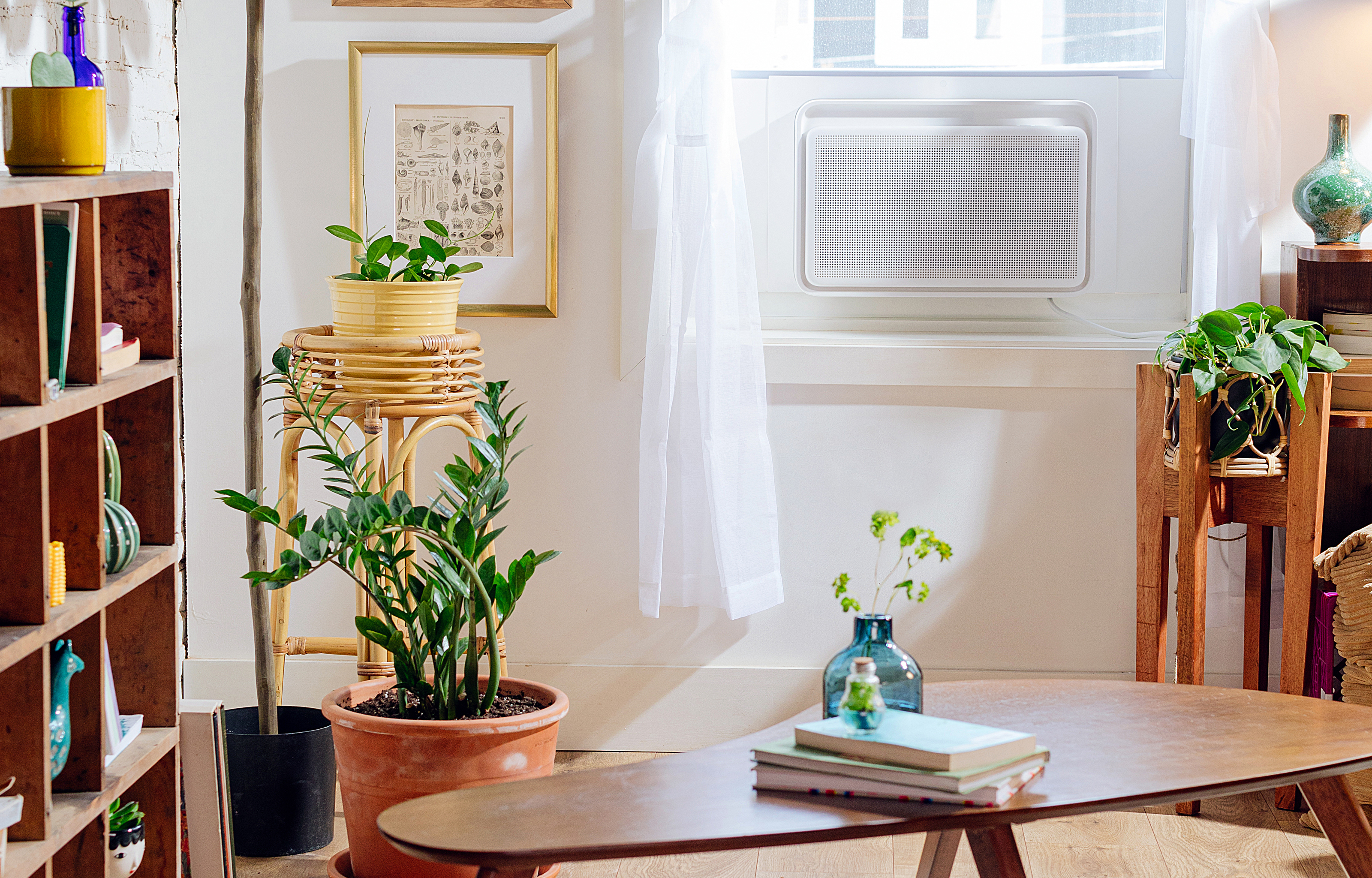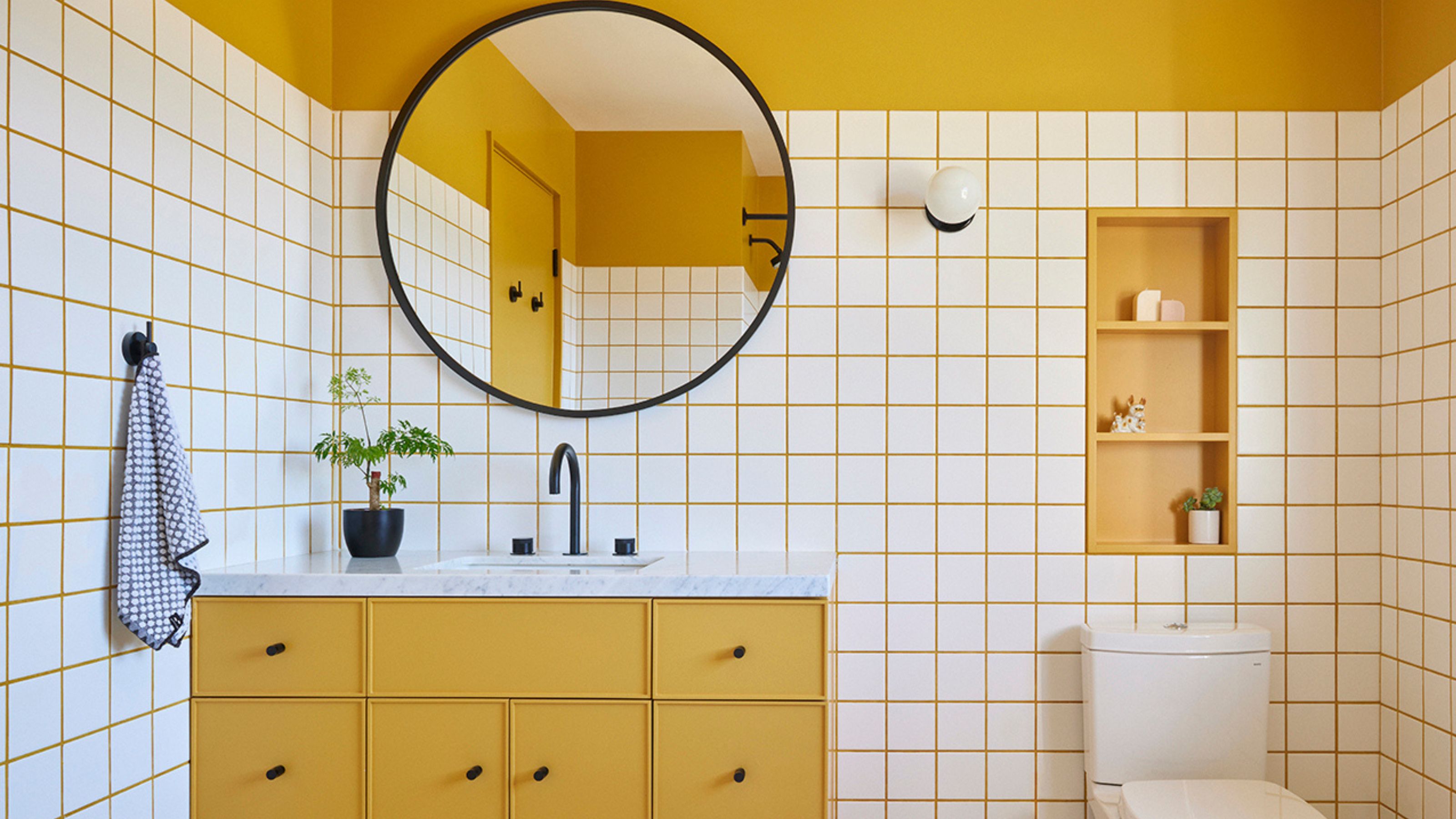How to install a window AC unit – the myth-busting advice from the experts you need to know
Learn how to install a window AC unit yourself with this advice from the professionals


If you don't have central air, learning how to install a window AC unit may be your only relief from escalating temperatures. However, it can seem like a daunting task, especially given where you have to position your unit.
'The tricky part is the weight of these units is on the back, which hangs out the window,' says Rick Berres of Minneapolis renovation company The Honey Doers. 'That means you’re placing a heavy unit through your window, and it can easily be pushed straight out. There are a ton of people who break their AC units every year because they simply miss the seal and throw it out the window by accident.' That's one outcome we definitely want to avoid.
Yes, there are plenty of ways to cool down a room that don't require air conditioning, but it's by far and large the most effective way if you find temperatures reaching unbearable heights. If the only thing putting you off is the thought of installing it yourself, here the experts outline how simple a task it can be.
Can a window AC unit go in any window?
The first step of how to install a window AC unit is buying one. But how do you find one that will work for your window?
It's always best to refer to the manufacturer's guide for a make and model to ensure it will work for the type of window you're trying to fit an AC unit in. 'This step is crucial to ensure it matches the type of window where you plan to install it,' explains Robert Johnson from Coast Appliances. 'Some window air conditioners are suitable for single-hung or double-hung windows, whereas others are for casement or sliding horizontal windows, which are taller than wider.'
You also need to make sure you take accurate measurements of your window before you buy. 'Window AC units come in different sizes, and getting the best size that fits the window means less hassle with trying to make a smaller unit fit correctly,' says Lane Dixon, Vice President of Operations at Aire Serv, a Neighborly company. 'Measure the room too to get the correct size air conditioning unit for proper cooling of the space.'
What's the best way to install a window AC unit?
Fortunately, modern manufacturers of window air conditioning units make them much easier to install. 'New window AC units come with all the hardware you need to install them securely and to close up from the outside,' says Tim David, a 30-year veteran of installing home ventilation and air conditioning and owner of Airlucent.
1. Clear your window
Before you start work, it's best to get your window prepped for the unit. 'Be sure to clear off the window seal of debris and remove exterior screens,' says Airserv's Lane Dixon.
2. Install the brackets
Does a window AC unit need a bracket? Generally, yes. A well-installed window AC unit may be fine without a bracket, but it's never a bad idea to take a belt-and-braces approach, and in some areas, like New York City, for example, brackets are required for all window AC units to safeguard the people on the streets below. While falling AC units are a major TV trope to kill off characters, it almost never happens in real life you'll be pleased to know.
It can also help ease the strain on your windows, too. 'To make sure the unit does cause damage to your window, you can install a bracket to alleviate some of the weight from the sill,' says Glenn Wiseman from Top Hat Home Comfort Services. 'Follow the instructions provided with the bracket to install it properly.'
3. Lift the unit into place
'When installing the air conditioning unit in the window, always lift with your legs, as they can be heavy,' advises Lane Dixon of Air Serv. 'Ensure that when the AC unit is in the window, the bracket is on the outside of the window's bottom lip. The top bracket should be on the inside of the window.'
'Fit it into the bottom part of the window and then slide the top part of the window down into the groove on the top of the unit,' explains Tim David. 'This will keep it in place.'
'Make sure the window unit is centered and leveled,' Lane adds. Depending on the model, you may have to attach it to the window sash with screws.
4. To tilt, or not to tilt
A cursory Google might suggest that your window AC unit needs to be tilted between 2-3° once fitted. But why?
'Making sure the window air conditioning unit is slightly tilted backwards to allows for drainage,' explain Lane Dixon. This ensures that the water that the unit collects is released outside, rather than entering through the window and dripping down the wall.
However, it may not be necessary for modern units. 'You can add a piece of wood along the bottom of it if you want to tilt it back a bit so the water drains out but it is not necessary on newer window AC units as they should have drain holes to assist with accumulated water,' explains Tim David.
'Read the instructions to decide whether the AC needs to be tilted,' suggests Glen Wiseman. 'If you have an older second-hand model, you are probably safe to assume it does.'
5. Seal the gap
'Next use the attached side sliders to close the gap on both sides of the AC unit so that fills in all the open space to prevent outside air and bugs from creeping in,' explains HVAC expert Tim David.
'This requires setting up the foam insulation strips and then expanding the panels to be screwed in,' adds Glen Wiseman.
Do I need to leave a window AC unit to rest before using it?
If you've had the window AC unit stored on its side or upside down, you take to be careful when first using it. 'Let a new or used AC unit sit for 24 hours before installing it,' suggests Robert Johnson from Coast Appliances. 'This allows the oil to settle in the compressor to avoid damage.'
How much does a window AC unit cost to install?
If you don't fancy taking on the job of installing a window AC unit yourself, getting in a professional isn't going to break the back. 'Window air conditioner installation costs average between $150 to $750 all in, depending on the type of unit you buy,' says Jo Brown, managing editor of HVAC.com. 'The national average is approximately $300.'
It's a job that doesn't necessarily require a specialist. For example, contemporary AC brand Windmill has a working relationship with Task Rabbit where a customer buying one of their new units can have it installed with prices starting from $40-$80.
Be The First To Know
The Livingetc newsletters are your inside source for what’s shaping interiors now - and what’s next. Discover trend forecasts, smart style ideas, and curated shopping inspiration that brings design to life. Subscribe today and stay ahead of the curve.

Hugh is Livingetc.com’s editor. With 8 years in the interiors industry under his belt, he has the nose for what people want to know about re-decorating their homes. He prides himself as an expert trend forecaster, visiting design fairs, showrooms and keeping an eye out for emerging designers to hone his eye. He joined Livingetc back in 2022 as a content editor, as a long-time reader of the print magazine, before becoming its online editor. Hugh has previously spent time as an editor for a kitchen and bathroom magazine, and has written for “hands-on” home brands such as Homebuilding & Renovating and Grand Designs magazine, so his knowledge of what it takes to create a home goes beyond the surface, too. Though not a trained interior designer, Hugh has cut his design teeth by managing several major interior design projects to date, each for private clients. He's also a keen DIYer — he's done everything from laying his own patio and building an integrated cooker hood from scratch, to undertaking plenty of creative IKEA hacks to help achieve the luxurious look he loves in design, when his budget doesn't always stretch that far.
-
 There’s a New Shape in the Garden — Why Whimsical Curves Might Be the Outdoor Furniture Silhouette of the Summer
There’s a New Shape in the Garden — Why Whimsical Curves Might Be the Outdoor Furniture Silhouette of the SummerPowder-coated petals, wavy lines, and a hint of surrealism — this microtrend is blooming, and we’re paying attention
By Julia Demer
-
 10 Yellow Bathroom Ideas That Vitalize Your Mornings and Look Unexpectedly Sophisticated While Doing So
10 Yellow Bathroom Ideas That Vitalize Your Mornings and Look Unexpectedly Sophisticated While Doing SoYellow is a color that by its very nature is energetic and full of life, and these designers have proved it's ideal for a bathroom
By Oonagh Turner